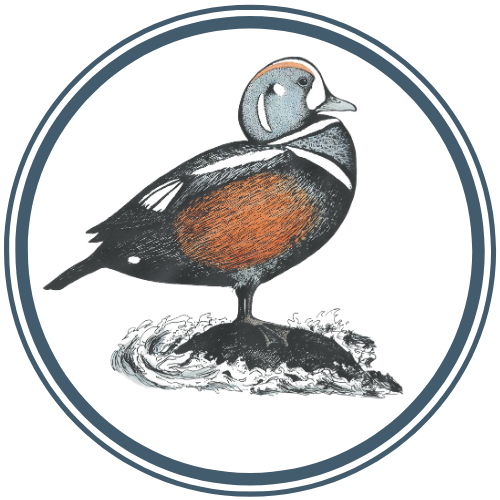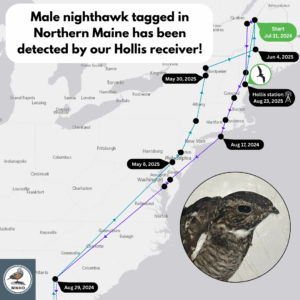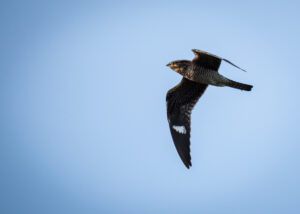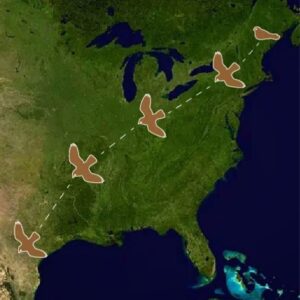June 2025
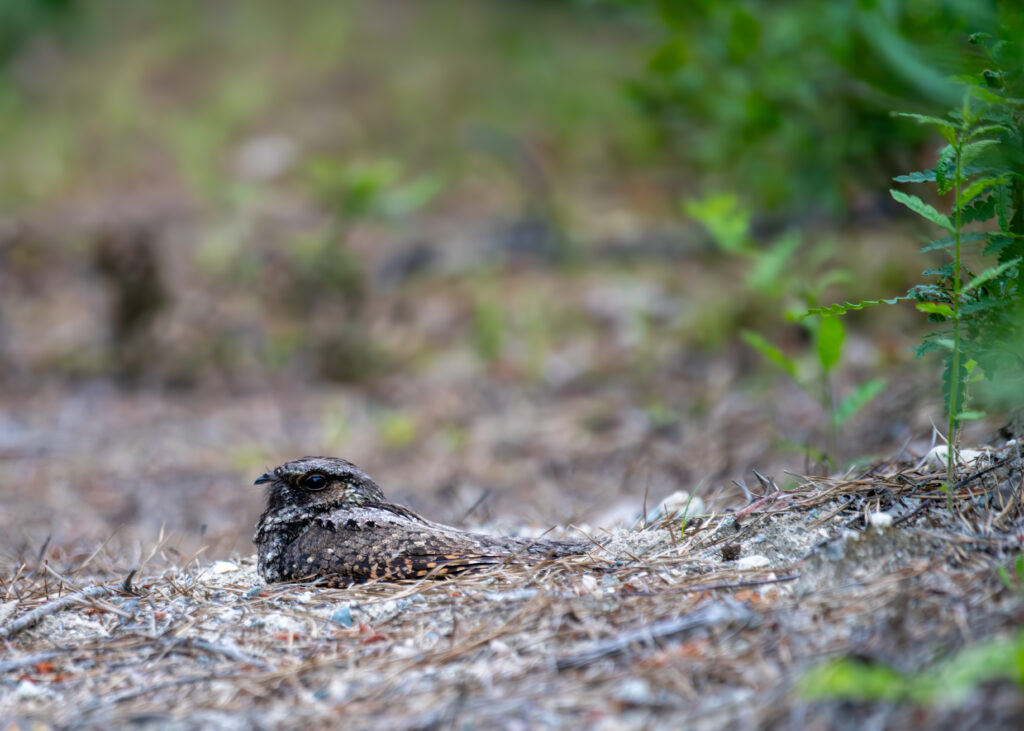
Sunset is imminent as I make my way into one of Maine’s last intact pine barrens. The insect-like song of a lone Grasshopper Sparrow rings out from atop a thicket before the singer falls silent and retreats to cover. A chorus of Eastern Towhee and Prairie Warbler songs and calls dominate this golden hour while the Veeries begin their vespers from the darkening forest edges. As mosquitos drone through the cooling June air, a flurry of small pale moths take wing over the expanse of scrubland and lush grassland. I’ve arrived just in time.
Although my quarry is still resting silently, having slept through the daylight hours, I can hear him, or rather can hear the signal emitted by the small radio tag deployed on this bird a few nights previous. With a yagi antenna held aloft and VHF receiver slung over my shoulder, I have tracked this individual to his roost site where he lies hidden among the lofty hedge of Pitch Pine and Red Oak that encircles this portion of the Kennebunk Plains. Having found his general location, I stand at the forest edge and monitor the signal strength to assess when this bird wakes for the evening. As day shifts to night, the cast change continues. Barred Owls caterwaul in the distance, crickets sing, and the lone silhouette of a Saturniidae moth drifts past. After twenty minutes or so of attentive monitoring, the volume of the series of clicks issued from the receiver’s speaker drops and the signal strength with it. The bird is awake and a-wing.
“Whip-poor-will, whip-poor-will, whip-poor-will, whip-poor-will!”
After a few bouts of song, this Eastern Whip-poor-will falls silent and moves out of range of my receiver. Turning up the gain, I begin the search anew and quickly find a direction within the tangle of Scrub Oak, Gray Birch, and Pincherry once the bird is detected at the highest signal strength. The receiver clicks incessantly with signals emitted by tags deployed on other individuals within the area, but my focus is fixed on this first individual. Winding through the labyrinth, I throttle my gain as I hone in on the bird. The dusk quickly permeates this densely grown section of young forest and Whip-poor-will songs can be heard in nearly every direction. I switch on my headlamp and a few seconds later spot the fiery orange reflectance characteristic of Whip-poor-will eyeshine on a patch of leaf strewn earth sheltered by the shrubs. My receiver signal strength is through the roof despite a modest gain. The tracking effort has been a success.
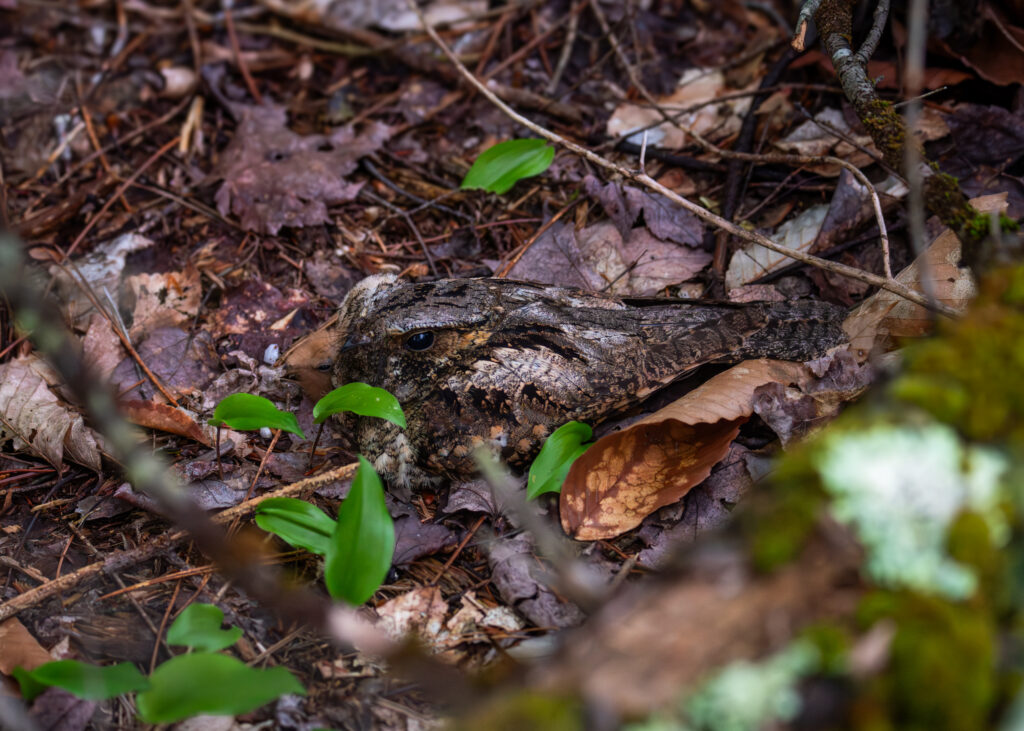
After roosting for the day, this male has arrived at the nest site to relieve the female of her incubation or brooding responsibilities, enabling her to leave to forage. This has provided the perfect opportunity for our project to locate this bird’s well hidden nest site. After sitting tight a few moments, the male knows he’s been spotted and springs into action, performing an exuberant distraction display. On the ground, among the leaves and herbaceous growth, a pair of downy orange nestlings nestle together, pin feathers just beginning to develop along their small folded wings. Seeking to limit my disturbance, I work quickly to document the site and birds before installing an infrared camera to monitor the site remotely to assess the activity and outcome of breeding pairs’ efforts.
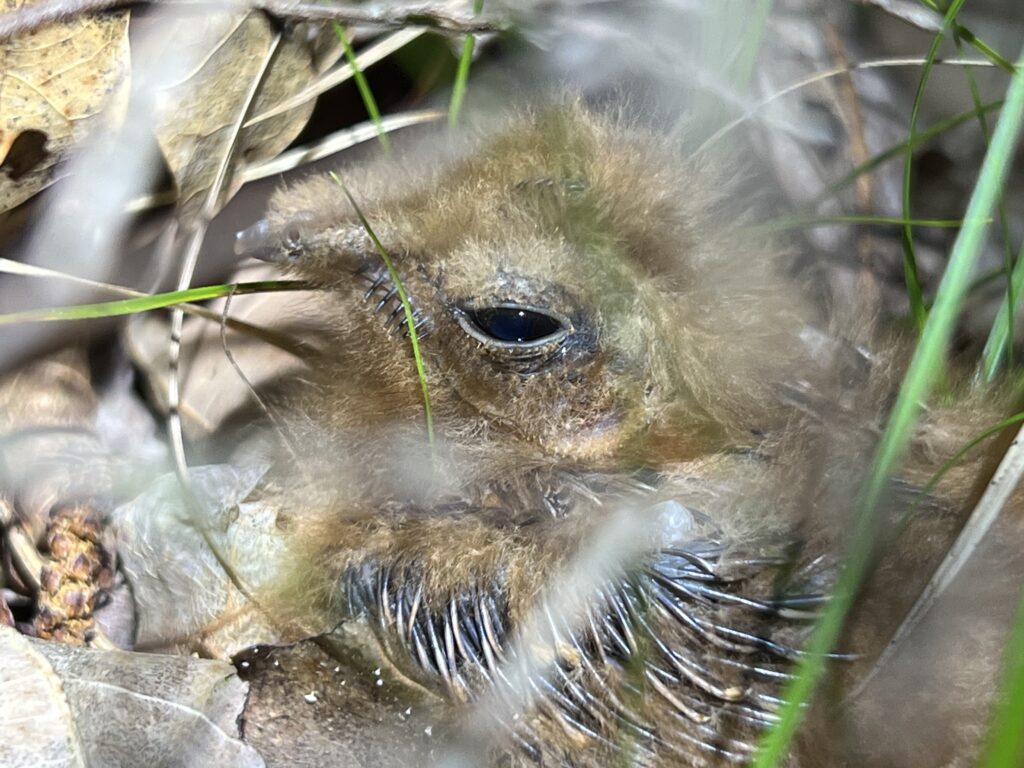
This is the third year of intensive effort focused on the study of nightjar nesting and movement biology as part of the expanded Maine Nightjar Monitoring Project. The knowledge and experience carried over from previous seasons, along with new insights and expertise shared with the project from other nightjar researchers, has resulted in a highly successful early portion of the field season. Receiver stations in Fayette and Daaquam (within the North Maine Woods) have been operational for more than a year providing critical information on daily activity and interseasonal movements to and from the breeding grounds. In addition to gathering insights on Whip-poor-wills and Nighthawks tagged by the project, the station atop Surry Hill (a property managed by the Kennebec Land Trust in Fayette) documented the movements of Rusty Blackbirds, Wood Thrush, and Northern Saw-whet Owls tagged by other projects within the Motus network. A new receiver station was installed within the Killick Pond Barrens in Hollis, Maine and is now operational. Project staff have successfully relocated and tracked previously tagged birds at all of our study sites, a growing number of which have been tracked to active nest sites. This effort continues as more individuals are outfitted with nanotags at sites across the state.

Logistical challenges are inherent within field work and our project has been no exception. The project has been dealt a number of setbacks across the early weeks of this year’s efforts. Equipment failures and unfavorable weather have complicated our efforts on more than a few occasions. In one instance, a promising prospect ended in disappointment when a returning male Whip-poor-will (sighted this May with a female in close proximity to a 2024 nest location) was predated and found buried by a Coyote with his nanotag still intact. On another occasion, project staff successfully captured both a male and female (the latter being a rare occurrence during banding efforts) only for the infrared nanotag activator to inexplicably fail, leading to the two birds being released without tags. Nonetheless, the determination and flexibility of our team has ensured that the project continues to progress on our various objectives, traveling several hours and working well into the night to make up any lost ground. The male that was previously released without a tag was recaptured and outfitted with an activated tag. A few days later, his mate was found incubating a set of two lightly speckled eggs.
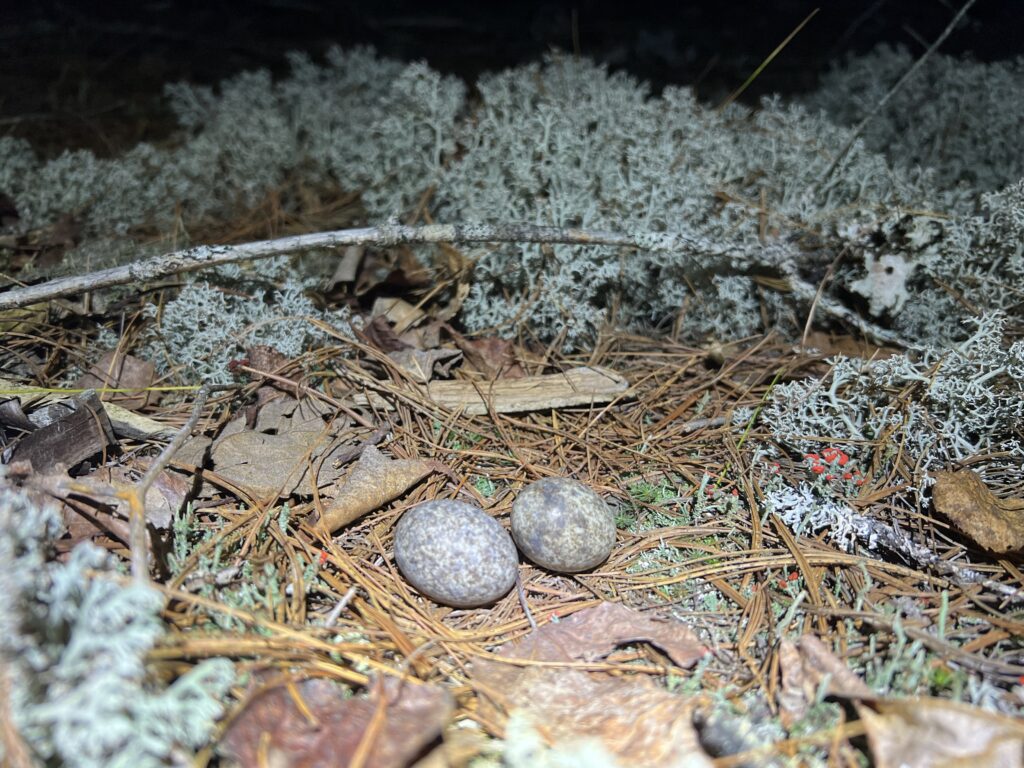
We entered into our third year of expanded efforts of this collective and highly collaborative project primed for a successful season regardless of what the field season threw at us. In addition to our dedicated corps of road-based nightjar monitors across the state, project staff are working in partnership with staff at the Maine Department of Inland Fisheries and Wildlife (MDIFW) and Biodiversity Research Institute (BRI) to accomplish our myriad of field objectives. Thanks to the support of MNHO members, MDIFW, and Maine Outdoor Heritage Fund, we have had the resources to run concurrent efforts across multiple sites, making more efficient use of the fleeting nights when conditions are optimal for tracking, tagging, and nest searching.
The work won’t end when our field work wraps up in August. Our staff will embark on the next phase of the project: analysis, compilation, and publication. The MNMP has been an ambitious undertaking in several respects, in terms of both geographic scope and data collection. Studying nightjars requires a tremendous amount of planning and effort. Eastern Whip-poor-wills and Common Nighthawks are sensitive species with long histories of being overlooked or under-prioritized by traditional monitoring methods. A lack of critical insights on several aspects of these birds’ statuses and life histories has been a pervasive barrier to conservation. Our goals were to maximize the value of our brief encounters with these birds while counterbalancing those ambitions by exercising a high degree of caution during field efforts. The result of these pursuits is a robust and diverse dataset consisting of nearly a decade’s worth of monitoring data, physical measurements of all nightjars banded by the project, movement data collected within the Motus network, habitat associations documented at each of the nest sites, camera footage to assess nesting outcomes as well as fecal samples and insect samples to assess prey selection and availability. All of these pieces of information will need to be reviewed, analyzed, and compiled to be shared with the public. In addition to publishing our research findings in academic repositories, producing resources that could be directly used by landowners and managers to inform land management and nightjar conservation efforts has been a high priority for this project since its inception. We know that Maine’s nightjars are declining. That change has been apparent to Mainers for the last several decades. Our hope is that we can bring together what we have learned over the last few years of intensive study to begin piecing together the puzzle to provide an explanation as to why.
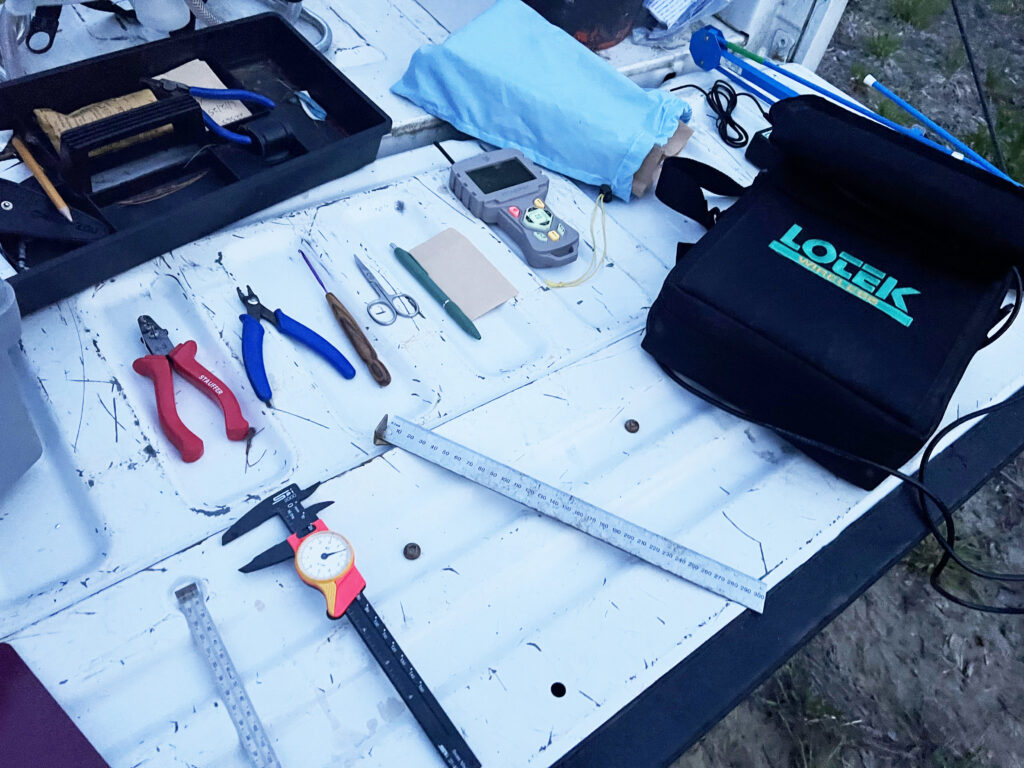
The field work continues at the time of writing, however. Tonight our crews will be spread out across the state with staff tracking tagged birds on the Killick Pond Barrens in Hollis while others conduct tracking and tagging efforts within the sandy woodlands bordering Martin Stream in Norridgewock. Cameras deployed across the state are collecting footage of nesting attempts by both Whip-poor-will and Nighthawks at a number of sites. In a few short days, I will be headed up to conduct fieldwork in the St. John River Forest (managed by The Nature Conservancy) to study Nighthawks in the working woodlands of northwestern Maine.
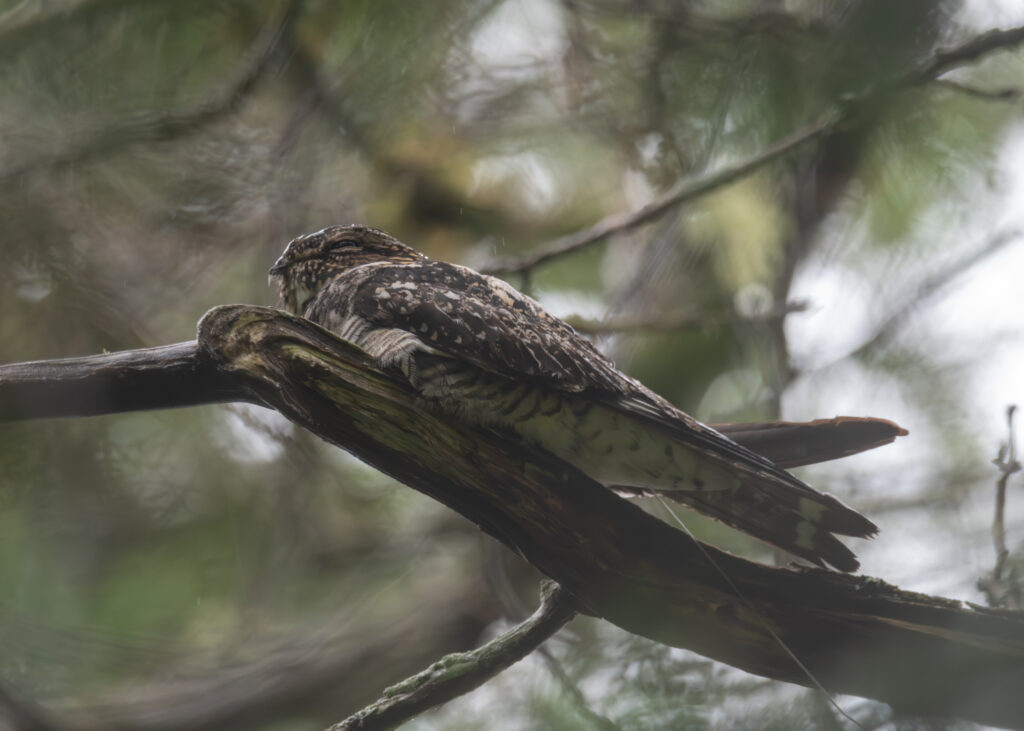
Before long the summer nights will begin to shorten and the last of this year’s nestlings will fledge into darkened forests and shrublands. On some late summer night, the last refrain of “whip‑poor‑will” will drift out from some hiding place on the barrens before the birds settle into the quieter period of life that precedes their departure in the latter days of September or early October. The Nighthawks will move on even sooner. Few of them will linger on their breeding grounds past late-August. Even as they leave, those nightjars tagged by the project continue to share insights into the paths by which they travel and identify the areas that sustain them throughout their travels between annual cycles. The valuable insights we have gathered—from nanotag radio pulses to infrared nest‑camera footage—will form a comprehensive resource that will guide foresters, biologists, and landowners toward decisions that might just help keep nightjars on the Maine landscape for future generations.
For those of us who have had the pleasure of working with and coming to know these birds, there is a less tangible reward that comes from having worked beneath the rising moon awash in the sounds of a bird so elusive that few have laid eyes upon it directly, let alone felt one flutter back into the night sky from the hand. With that rare perspective comes a sense of responsibility, forged in mosquito‑laden darkness and by the glow of a headlamp, that will follow our team long past the months of analysis and outreach to come—perhaps, back into the field among nightjars returning to the landscape on the winds of another spring.
- by Logan Parker
Check out where our birds have been detected on the MOTUS website!
Share
Learn more about
The Maine Nightjar Monitoring Project
Read about the project, see the latest news, and explore the Motus tracking maps.
Common Nighthawk | Logan Parker
Related Content
-
-
-
And they’re off!
19 October 2023
